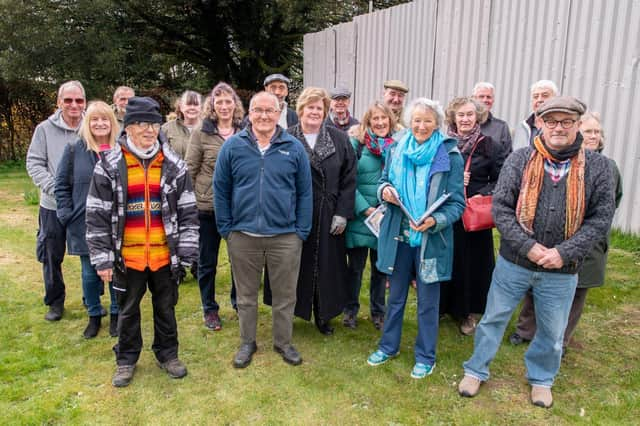Graveyard tour breathes life into history


To raise money for village funds, High Toynton’s cemetery was the setting of a Living Graveyard tour on Sunday, with around a dozen people coming to hear all the fascinating facts from the church.
Spokesman, Alison Bell, said: “The tour was bringing to life certain people in the graveyard whose history I’ve found out, and people found it really interesting.”
Advertisement
Hide AdAdvertisement
Hide AdJust some of the fascinating characters to come out of the Living Graveyard tour was Theophilus Caleb, Toynton’s Parish Constable.
At the time, parish constables were responsible for licensing inns, serving court orders, apprehending criminals and taking them to court, and escorting paupers to their places of settlement.
His duties were largely taken over by the county police by the mid 19th century, although High Toynton continued to use their services until 1926.
A constable was also expected to carry out punishments on poachers and other miscreants – hedge damagers, prostitutes, church avoiders and fathers of children with unmarried parents.
Advertisement
Hide AdAdvertisement
Hide AdInterestingly, a parish constable was unpaid with no training, no uniform and no weapons, and he had to be a “person of substance” or else he might be dismissed by the justices as an “insufficient person”.
One Constable’s bill from High Toynton, dated 1722, was found during Alison’s research and appears to be claiming a certain amount of expenses for his “journeys” to Horncastle to carry out legal duties and the ale that was drunk - so it appears there were some perks to the job.
Then there’s the intriguing story, written by Alison’s aunt, of Ukrainian prisoner of war George Tartaryn, who is buried in High Toynton’s churchyard along with his English wife and his son, Myron.
He was born in 1922 and was taken prisoner by the British and interned for two years in Italy after escaping from the Russians.
Advertisement
Hide AdAdvertisement
Hide AdHe withstood unspeakable horrors and tragedy during the war, including being caught by the Russians, stripped and made to dig their own grave. As the Russians raised their guns to shoot them, the German Gestapo came and the Russians ran away.
George was then brought to England, and after 23 different jobs from various internment camps, the last being Moorby, he became cowman to Christopher Ingomells of Revesby Bank, eventually marrying his daughter.
He then had a short spell of working for G. B. Read before moving to Spring Cottage High Toynton as a shepherd in 1952 working for George Oliver senior “who taught him all he knows about sheep.”
Then there’s a particularly colourful character with ties to High Toynton - an Indian vicar who was born in India and educated in London, becoming a barrister in 1905 but changed vocation and entered the church in 1926.
Advertisement
Hide AdAdvertisement
Hide AdHe became vicar in Lumb, Lancashire but he clashed with the parishioners and eventually, was ousted by his flock and relocated to High Toynton, where he was vicar for a time.
There is also evidence that he seduced a girl living in the village at the time.
The event raised more than £200 for the village renewal project funds.